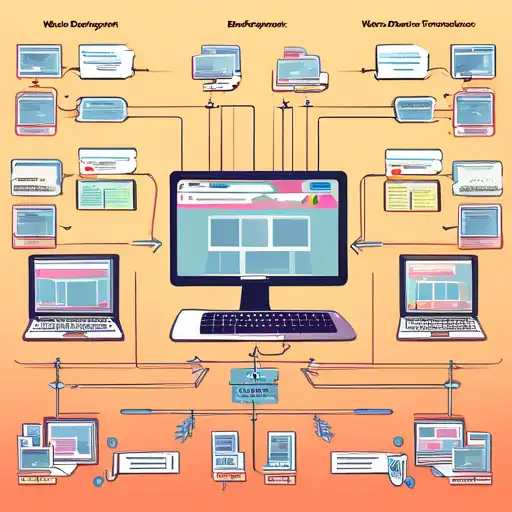Understanding Web Development Frameworks
In the ever-evolving world of web development, choosing the right framework can be a daunting task. With a plethora of options available, each promising to be the best, how do you decide which one is right for your project? This guide aims to demystify the process, helping you make an informed decision based on your project's needs, your team's expertise, and the long-term maintainability of your code.
What Are Web Development Frameworks?
Web development frameworks are software libraries designed to support the development of web applications, including web services, web resources, and web APIs. They provide a standard way to build and deploy web applications on the World Wide Web. Frameworks can be broadly categorized into frontend (client-side) and backend (server-side) frameworks, each serving distinct purposes in the web development process.
Frontend vs. Backend Frameworks
Frontend frameworks, such as React, Angular, and Vue.js, focus on the user interface and user experience aspects of web applications. They help developers create dynamic, responsive, and interactive web pages. On the other hand, backend frameworks like Node.js, Django, and Ruby on Rails handle the server-side operations, including database interactions, user authentication, and server logic.
Factors to Consider When Choosing a Framework
Selecting the right framework involves considering several factors. Here are some key aspects to keep in mind:
- Project Requirements: The nature and requirements of your project play a crucial role in determining the most suitable framework. For instance, a single-page application might benefit from a frontend framework like React or Angular.
- Community and Support: A strong community and extensive documentation can significantly ease the development process. Frameworks with large communities, such as Django or Ruby on Rails, offer a wealth of resources and third-party plugins.
- Performance: Consider the performance implications of the framework. Some frameworks are optimized for speed and can handle high traffic volumes more efficiently.
- Scalability: If you anticipate your application to grow over time, choosing a scalable framework is essential. Node.js, for example, is known for its scalability and is a popular choice for large-scale applications.
Popular Web Development Frameworks in 2023
Here’s a look at some of the most popular web development frameworks this year:
- React: A JavaScript library for building user interfaces, maintained by Facebook.
- Angular: A platform and framework for building single-page client applications using HTML and TypeScript.
- Vue.js: A progressive framework for building user interfaces, designed to be incrementally adoptable.
- Node.js: A JavaScript runtime built on Chrome's V8 JavaScript engine, ideal for building fast and scalable network applications.
- Django: A high-level Python web framework that encourages rapid development and clean, pragmatic design.
Conclusion
Choosing the right web development framework is a critical decision that can influence the success of your project. By considering the factors outlined above and evaluating the strengths and weaknesses of each framework, you can select the one that best aligns with your project's goals and your team's skills. Remember, the best framework is the one that meets your specific needs, not necessarily the most popular one.
For more insights into web development, check out our articles on Web Development Trends and Choosing a Programming Language.
